-
 Bitcoin
Bitcoin $99,594.2189
-3.59% -
 Ethereum
Ethereum $2,188.5793
-9.00% -
 Tether USDt
Tether USDt $1.0001
-0.02% -
 XRP
XRP $1.9745
-5.82% -
 BNB
BNB $608.9511
-3.73% -
 Solana
Solana $130.4575
-5.93% -
 USDC
USDC $1.0000
0.01% -
 TRON
TRON $0.2637
-3.59% -
 Dogecoin
Dogecoin $0.1493
-5.97% -
 Cardano
Cardano $0.5322
-6.72% -
 Hyperliquid
Hyperliquid $33.9044
3.33% -
 Bitcoin Cash
Bitcoin Cash $449.6411
-5.46% -
 UNUS SED LEO
UNUS SED LEO $8.9629
0.43% -
 Sui
Sui $2.3943
-8.35% -
 Chainlink
Chainlink $11.4402
-7.83% -
 Stellar
Stellar $0.2241
-6.49% -
 Avalanche
Avalanche $16.1489
-4.24% -
 Toncoin
Toncoin $2.7182
-5.94% -
 Shiba Inu
Shiba Inu $0.0...01040
-5.72% -
 Litecoin
Litecoin $78.7882
-4.07% -
 Ethena USDe
Ethena USDe $1.0004
-0.01% -
 Hedera
Hedera $0.1305
-7.45% -
 Monero
Monero $297.0030
-5.32% -
 Dai
Dai $0.9997
-0.02% -
 Polkadot
Polkadot $3.1834
-6.03% -
 Bitget Token
Bitget Token $3.9788
-7.03% -
 Uniswap
Uniswap $6.1327
-10.62% -
 Pepe
Pepe $0.0...08689
-8.30% -
 Pi
Pi $0.4826
-9.65% -
 Aave
Aave $219.8043
-9.69%
What is a blockchain node? Popular science on the operating principle
Blockchain nodes validate transactions, maintain network security, and ensure decentralization by collectively upholding the distributed ledger's integrity.
Jun 22, 2025 at 11:00 pm
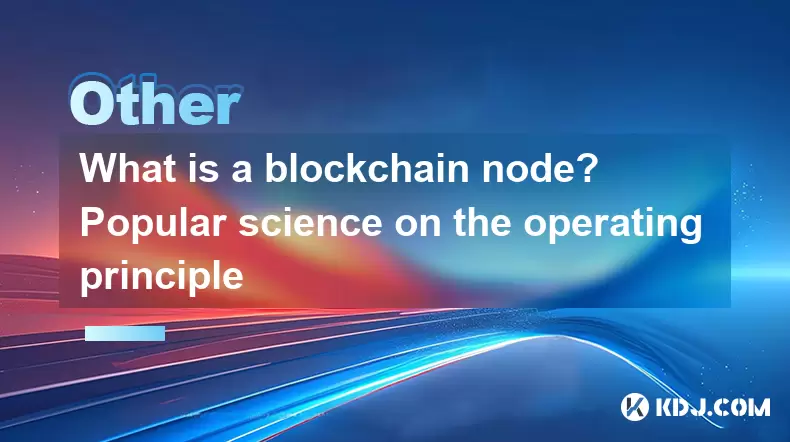
Understanding the Basics of a Blockchain Node
A blockchain node is essentially a computer connected to a blockchain network that participates in validating and storing transaction data. Each node plays a critical role in maintaining the integrity, transparency, and decentralization of the blockchain. Unlike traditional centralized systems where a single authority controls the data, blockchain nodes collectively ensure the accuracy of transactions across a distributed ledger.
In a decentralized environment, nodes act as individual validators, each holding a copy of the entire blockchain. This redundancy ensures that even if some nodes fail or behave maliciously, the system remains robust and secure. Nodes communicate with one another using peer-to-peer protocols, ensuring consensus on which transactions are valid and should be added to the next block.
Different Types of Blockchain Nodes
Blockchain networks typically feature various types of nodes, each serving a unique function depending on its capabilities and responsibilities:
- Full Nodes: These nodes store the complete history of the blockchain and validate all transactions independently. They play a crucial role in enforcing the rules of the network without relying on other nodes.
- Lightweight (SPV) Nodes: Simplified Payment Verification (SPV) nodes do not download the entire blockchain. Instead, they rely on headers of blocks to verify transactions, making them suitable for devices with limited storage or processing power.
- Mining Nodes: Also known as miners, these nodes are responsible for creating new blocks by solving complex cryptographic puzzles. They often run full node software to ensure the validity of transactions before mining.
- Staking Nodes: In proof-of-stake (PoS) blockchains, staking nodes participate in block validation based on the number of coins they hold and lock up as collateral. These nodes help maintain consensus and secure the network.
- Authority Nodes: Found in private or permissioned blockchains, authority nodes have special privileges and may be controlled by a central organization or consortium.
Each type contributes differently to the overall functionality and security of the blockchain ecosystem.
How Do Nodes Reach Consensus?
Consensus mechanisms are fundamental to how nodes interact and agree on the state of the blockchain. Popular consensus algorithms include:
- Proof of Work (PoW): Used by Bitcoin and Ethereum (before the Ethereum 2.0 upgrade), this method requires nodes (miners) to solve computationally intensive puzzles to add new blocks. The first miner to solve the puzzle broadcasts the solution to the network for verification.
- Proof of Stake (PoS): In PoS-based networks like Ethereum 2.0 and Cardano, nodes are chosen to create new blocks based on the amount of cryptocurrency they are willing to "stake" as collateral. This reduces energy consumption compared to PoW.
- Delegated Proof of Stake (DPoS): A variation of PoS where token holders vote for a small set of delegates who validate transactions and maintain the network.
- Byzantine Fault Tolerance (BFT): Common in private or consortium blockchains, BFT allows nodes to reach agreement even if some nodes fail or act maliciously.
Regardless of the mechanism used, the goal remains the same — to ensure that all nodes agree on a single version of the truth without requiring trust in any central entity.
The Role of Nodes in Transaction Validation
When a user initiates a blockchain transaction, it is broadcast to the network and picked up by nodes. These nodes perform several checks before accepting or rejecting the transaction:
- Digital Signature Verification: Each transaction must be signed with the sender’s private key. Nodes verify the signature to ensure the transaction comes from the rightful owner.
- Balance Check: Nodes confirm that the sender has sufficient funds to complete the transaction.
- Double-Spending Detection: Nodes cross-reference the transaction against previously recorded ones to prevent double-spending attempts.
- Smart Contract Execution: In platforms like Ethereum, nodes also execute smart contracts associated with the transaction to determine the outcome.
Once verified, the transaction is grouped with others into a candidate block. Miners or validators then compete or are selected to append this block to the blockchain. Upon successful addition, all nodes update their local copies of the blockchain accordingly.
Setting Up Your Own Blockchain Node
Running your own blockchain node can be a rewarding experience, especially for those interested in understanding how decentralized networks operate. Here's a step-by-step guide to setting up a basic full node:
- Choose the Blockchain: Decide which blockchain you want to support. For example, Bitcoin, Ethereum, or Litecoin.
- Prepare Hardware: Ensure your machine meets the minimum requirements. For instance, running a Bitcoin full node requires at least 600GB of disk space and a stable internet connection.
- Download the Software: Obtain the official node software from the blockchain’s website. For Bitcoin, this would be Bitcoin Core.
- Install and Configure: Follow the installation instructions specific to your operating system. Some configurations might include adjusting firewall settings or enabling port forwarding.
- Sync the Blockchain: After installation, the node will begin downloading and verifying the entire blockchain. This process can take anywhere from a few hours to several days, depending on your hardware and bandwidth.
- Maintain the Node: Keep the software updated and monitor performance regularly. Running a node helps strengthen the network while giving you greater control over your transactions.
This process varies slightly depending on the blockchain, but the core principles remain consistent across different platforms.
Frequently Asked Questions (FAQs)
Q1: Can I earn money by running a blockchain node?
While running a regular full node does not directly generate income, certain blockchains reward node operators through staking or governance participation. However, this usually applies to validator nodes rather than standard full nodes.
Q2: Is running a node risky?
There are minimal financial risks involved unless you're participating in staking or mining, which require locking up assets or investing in hardware. From a legal standpoint, ensure compliance with local regulations regarding cryptocurrency operations.
Q3: How much storage space do I need for a full node?
The required storage depends on the blockchain. As of recent data, a Bitcoin full node needs around 600GB, while an Ethereum node may require over 1TB of storage space. These numbers grow over time.
Q4: Can I run a node on a mobile device?
Mobile devices generally lack the storage and processing power needed to run full nodes. However, lightweight SPV nodes are available for mobile wallets, allowing users to interact with the network without storing the entire blockchain.
Disclaimer:info@kdj.com
The information provided is not trading advice. kdj.com does not assume any responsibility for any investments made based on the information provided in this article. Cryptocurrencies are highly volatile and it is highly recommended that you invest with caution after thorough research!
If you believe that the content used on this website infringes your copyright, please contact us immediately (info@kdj.com) and we will delete it promptly.
- Shiba Inu, Meme Coin, ROI 2025: Is the Hype Over?
- 2025-06-23 02:25:12
- Jeremiah Smith, Chrome Hearts, and a Coin Flip: Ballin' on a Buckeye Budget
- 2025-06-23 02:25:12
- Cold Wallet Strategies for Stellar and Kaspa: Navigating Market Shifts
- 2025-06-23 02:35:13
- Bitcoin to $21 Million? Michael Saylor's Bold Prediction
- 2025-06-23 02:35:13
- Trump Family's Crypto Empire: From Skeptic to Kingpin?
- 2025-06-23 00:25:12
- BlockDAG, Cardano, and Polygon: Decoding the Crypto Buzz in the Big Apple
- 2025-06-23 00:45:12
Related knowledge
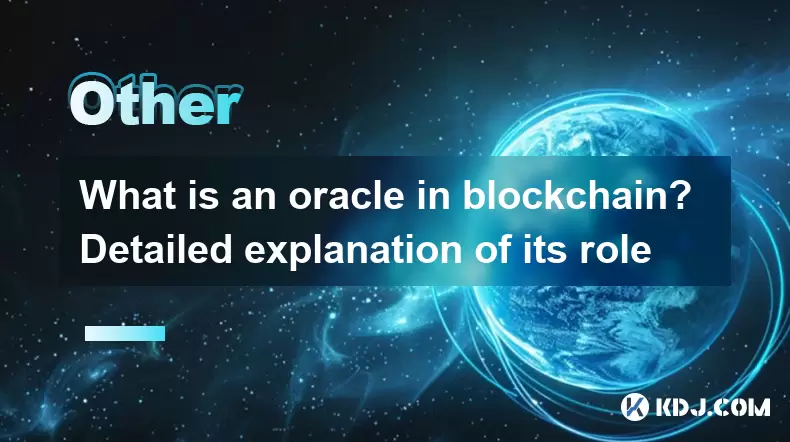
What is an oracle in blockchain? Detailed explanation of its role
Jun 21,2025 at 06:14am
Understanding the Concept of an Oracle in BlockchainIn the realm of blockchain technology, an oracle is a trusted third-party service that connects smart contracts with real-world data. Smart contracts are self-executing agreements where the terms are written directly into code and run on a blockchain network. However, these contracts operate in a close...
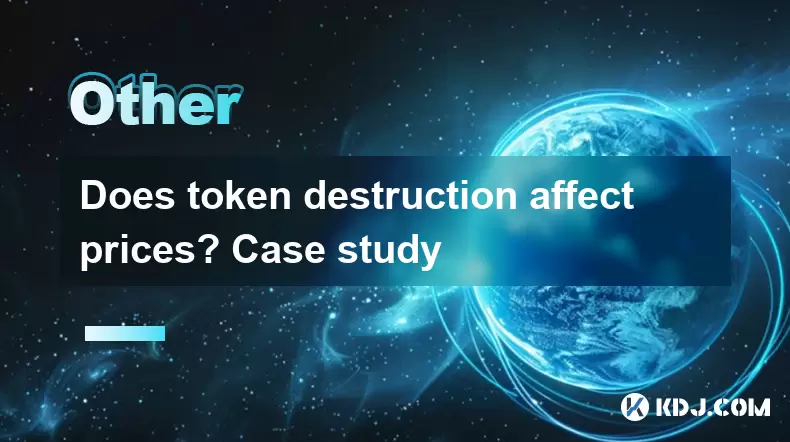
Does token destruction affect prices? Case study
Jun 22,2025 at 02:50am
Understanding Token DestructionToken destruction, commonly referred to as token burning, is a process where a portion of cryptocurrency tokens is permanently removed from circulation. This is typically done by sending the tokens to a non-recoverable wallet address, effectively reducing the total supply. Projects may implement token burns to create scarc...

What is a blockchain node? Popular science on the operating principle
Jun 22,2025 at 11:00pm
Understanding the Basics of a Blockchain NodeA blockchain node is essentially a computer connected to a blockchain network that participates in validating and storing transaction data. Each node plays a critical role in maintaining the integrity, transparency, and decentralization of the blockchain. Unlike traditional centralized systems where a single ...
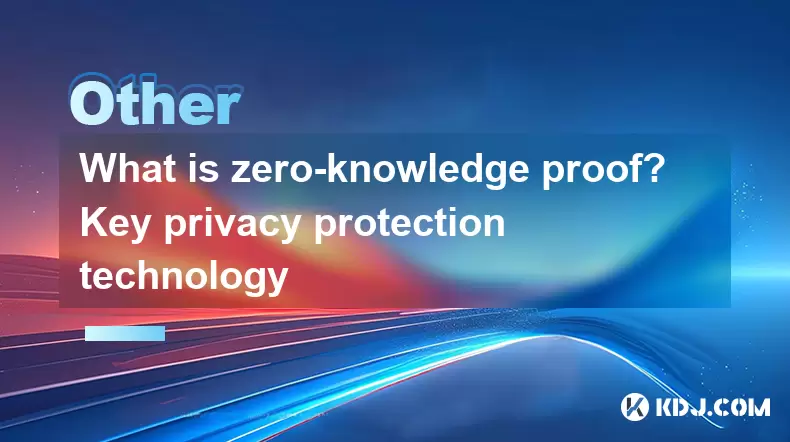
What is zero-knowledge proof? Key privacy protection technology
Jun 22,2025 at 07:29pm
Understanding Zero-Knowledge ProofZero-knowledge proof (ZKP) is a cryptographic method that allows one party to prove to another party that they know a value or information without revealing the actual content of that information. This concept is particularly important in the realm of privacy protection technologies, especially within blockchain and cry...
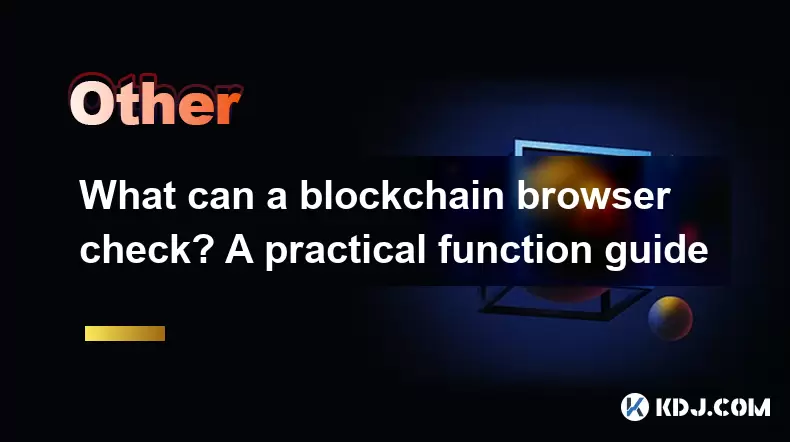
What can a blockchain browser check? A practical function guide
Jun 20,2025 at 07:35pm
Understanding the Role of a Blockchain BrowserA blockchain browser serves as a powerful tool for anyone interacting with blockchain networks. It allows users to explore, verify, and analyze data stored on the blockchain in real time. Unlike traditional ledgers or databases that are centralized, blockchains are decentralized and publicly accessible. This...
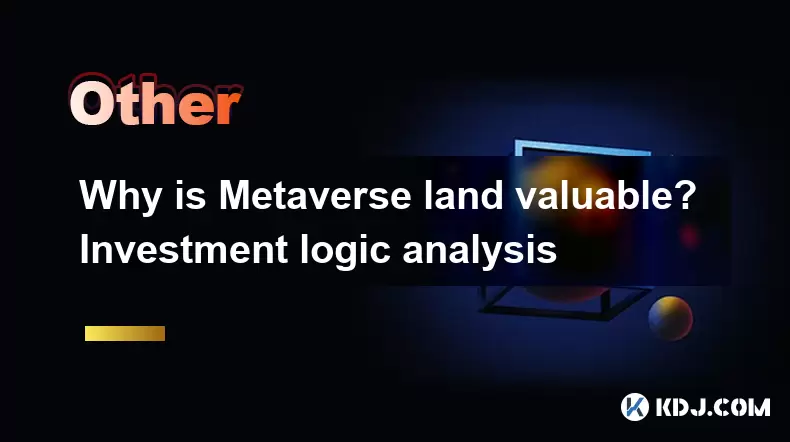
Why is Metaverse land valuable? Investment logic analysis
Jun 21,2025 at 10:01pm
Understanding Metaverse Land and Its SignificanceMetaverse land refers to virtual real estate within a decentralized digital universe. Unlike traditional real estate, this land exists in 3D environments powered by blockchain technology. Platforms such as Decentraland, The Sandbox, and Somnium Space offer users the ability to buy, sell, and develop virtu...

What is an oracle in blockchain? Detailed explanation of its role
Jun 21,2025 at 06:14am
Understanding the Concept of an Oracle in BlockchainIn the realm of blockchain technology, an oracle is a trusted third-party service that connects smart contracts with real-world data. Smart contracts are self-executing agreements where the terms are written directly into code and run on a blockchain network. However, these contracts operate in a close...

Does token destruction affect prices? Case study
Jun 22,2025 at 02:50am
Understanding Token DestructionToken destruction, commonly referred to as token burning, is a process where a portion of cryptocurrency tokens is permanently removed from circulation. This is typically done by sending the tokens to a non-recoverable wallet address, effectively reducing the total supply. Projects may implement token burns to create scarc...

What is a blockchain node? Popular science on the operating principle
Jun 22,2025 at 11:00pm
Understanding the Basics of a Blockchain NodeA blockchain node is essentially a computer connected to a blockchain network that participates in validating and storing transaction data. Each node plays a critical role in maintaining the integrity, transparency, and decentralization of the blockchain. Unlike traditional centralized systems where a single ...

What is zero-knowledge proof? Key privacy protection technology
Jun 22,2025 at 07:29pm
Understanding Zero-Knowledge ProofZero-knowledge proof (ZKP) is a cryptographic method that allows one party to prove to another party that they know a value or information without revealing the actual content of that information. This concept is particularly important in the realm of privacy protection technologies, especially within blockchain and cry...

What can a blockchain browser check? A practical function guide
Jun 20,2025 at 07:35pm
Understanding the Role of a Blockchain BrowserA blockchain browser serves as a powerful tool for anyone interacting with blockchain networks. It allows users to explore, verify, and analyze data stored on the blockchain in real time. Unlike traditional ledgers or databases that are centralized, blockchains are decentralized and publicly accessible. This...

Why is Metaverse land valuable? Investment logic analysis
Jun 21,2025 at 10:01pm
Understanding Metaverse Land and Its SignificanceMetaverse land refers to virtual real estate within a decentralized digital universe. Unlike traditional real estate, this land exists in 3D environments powered by blockchain technology. Platforms such as Decentraland, The Sandbox, and Somnium Space offer users the ability to buy, sell, and develop virtu...
See all articles

























































































